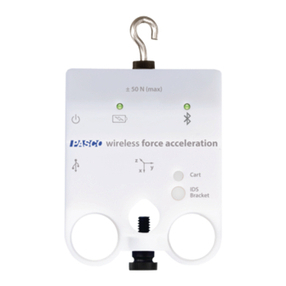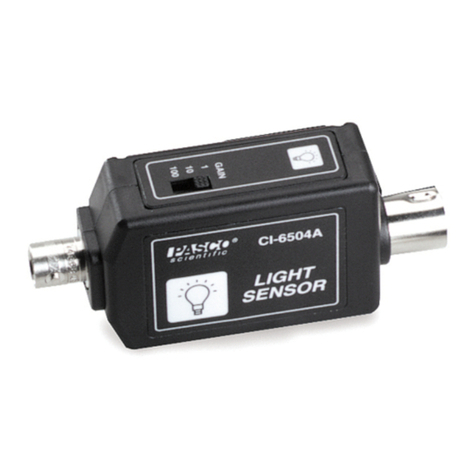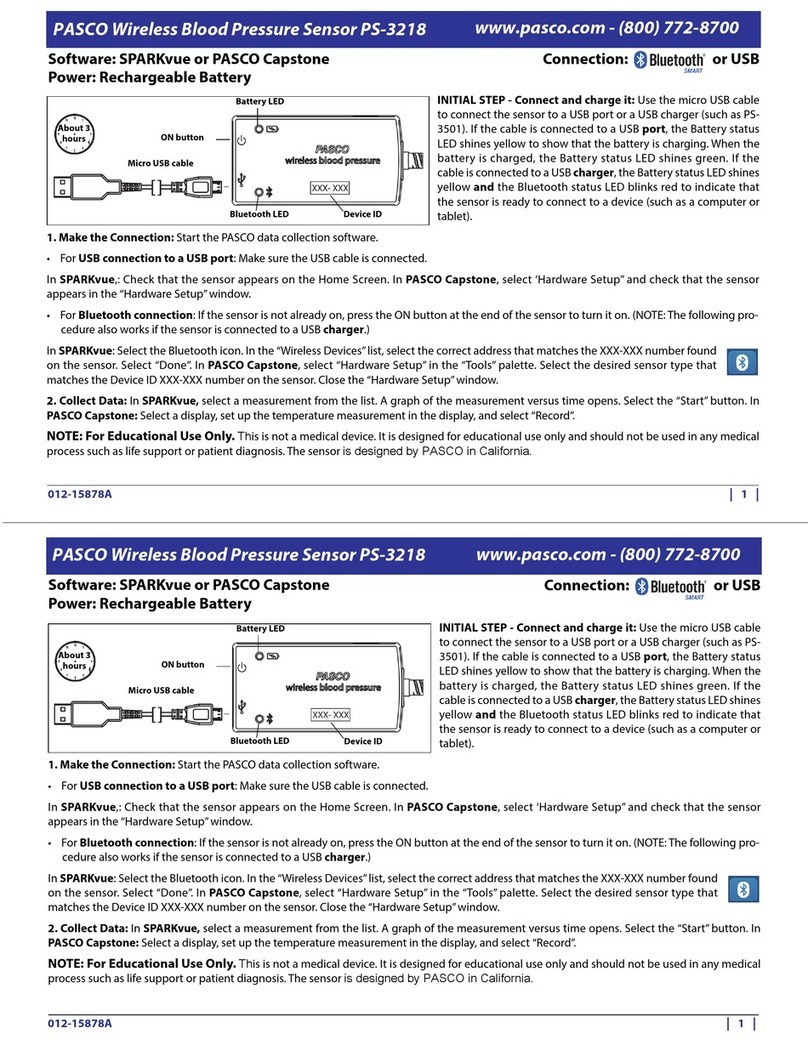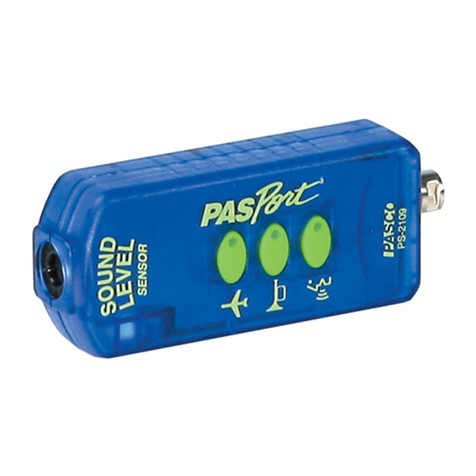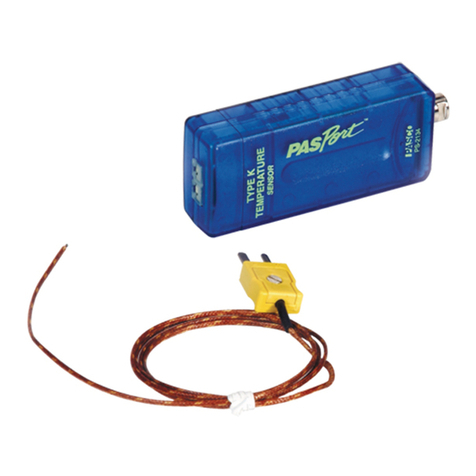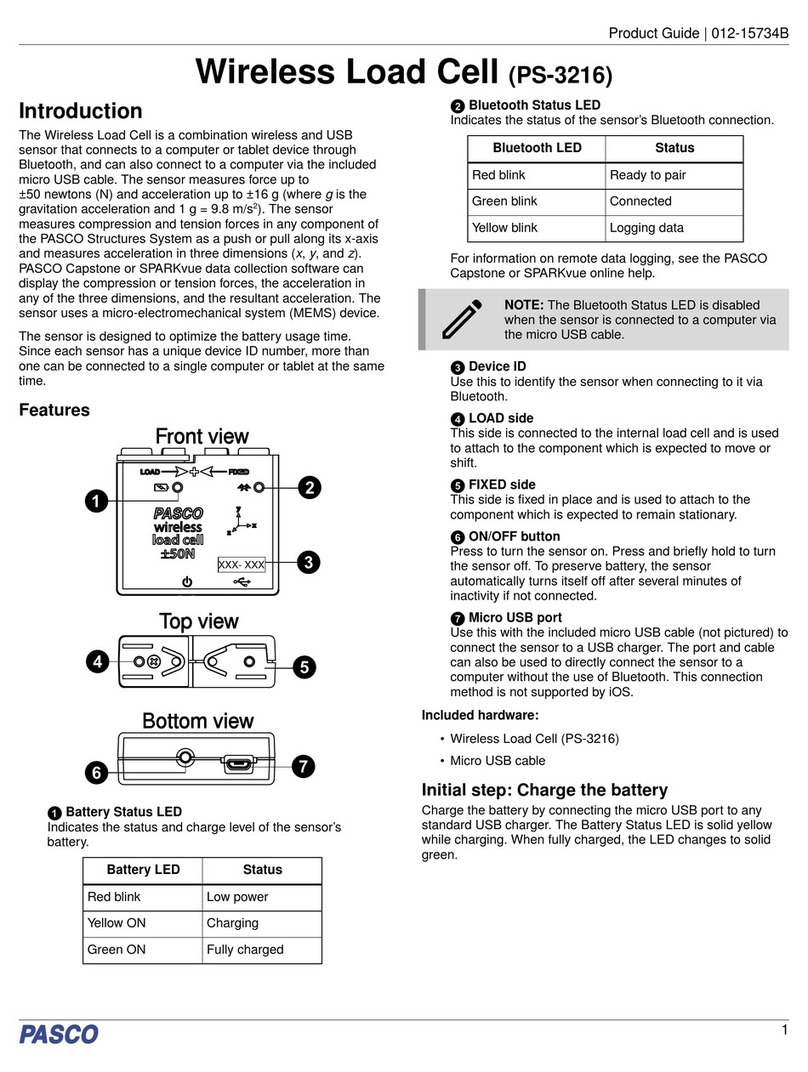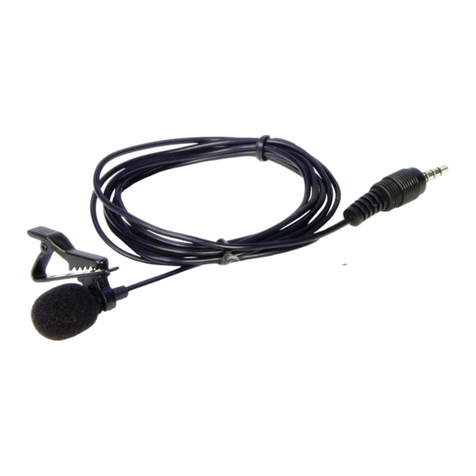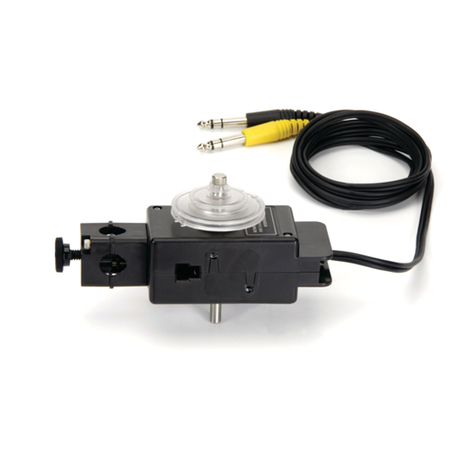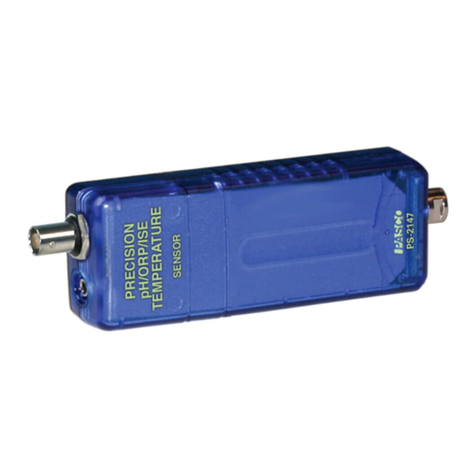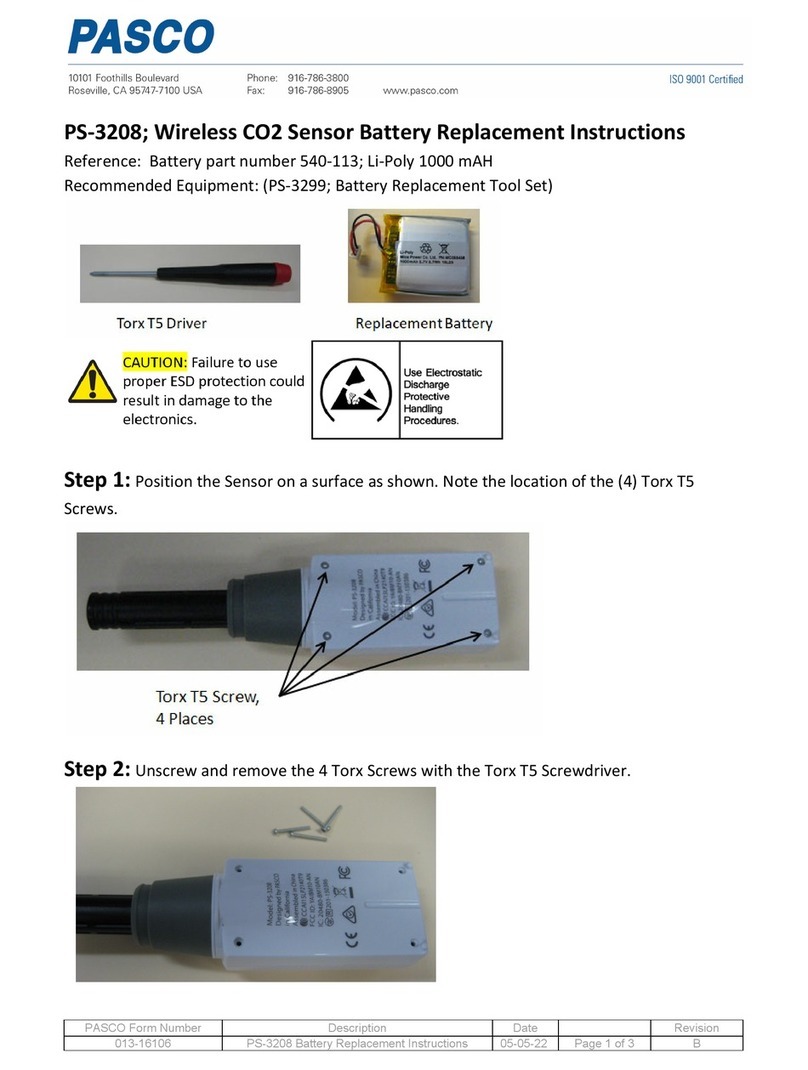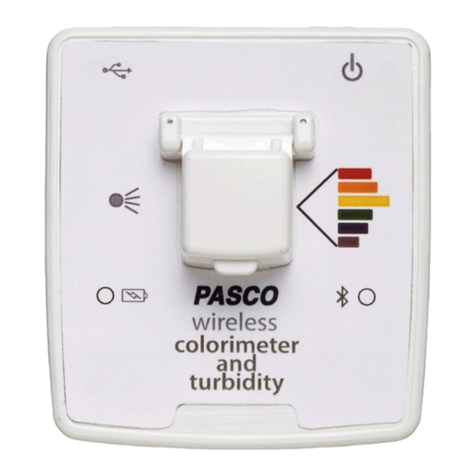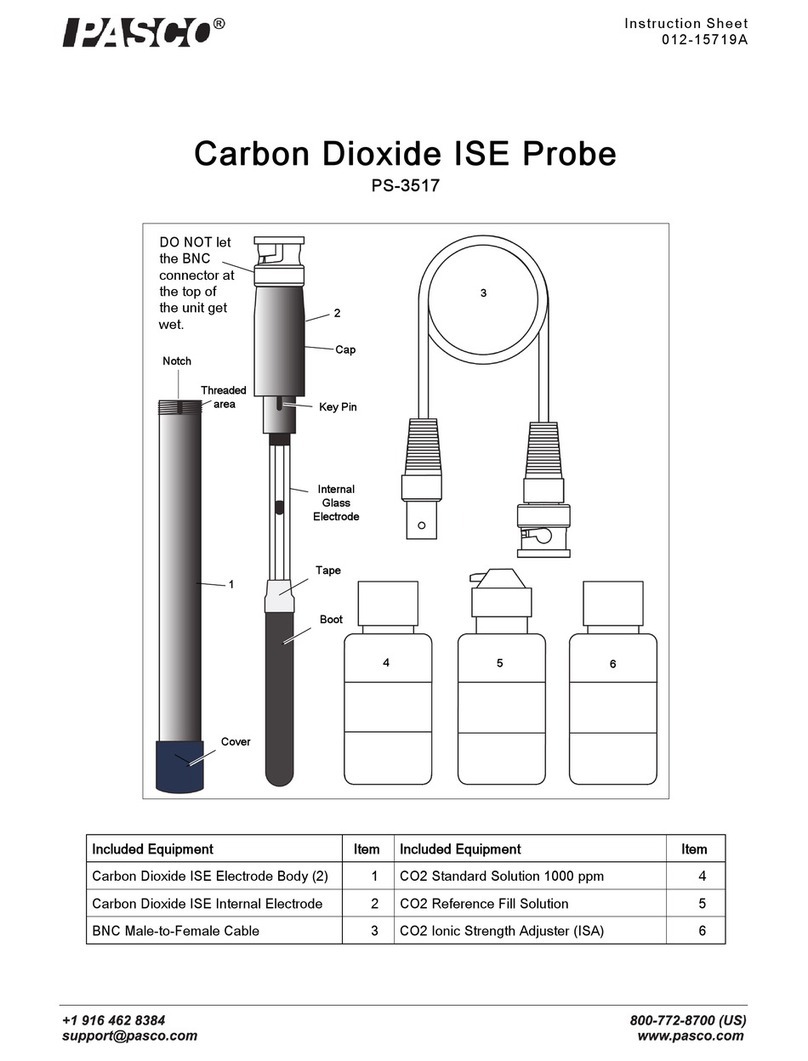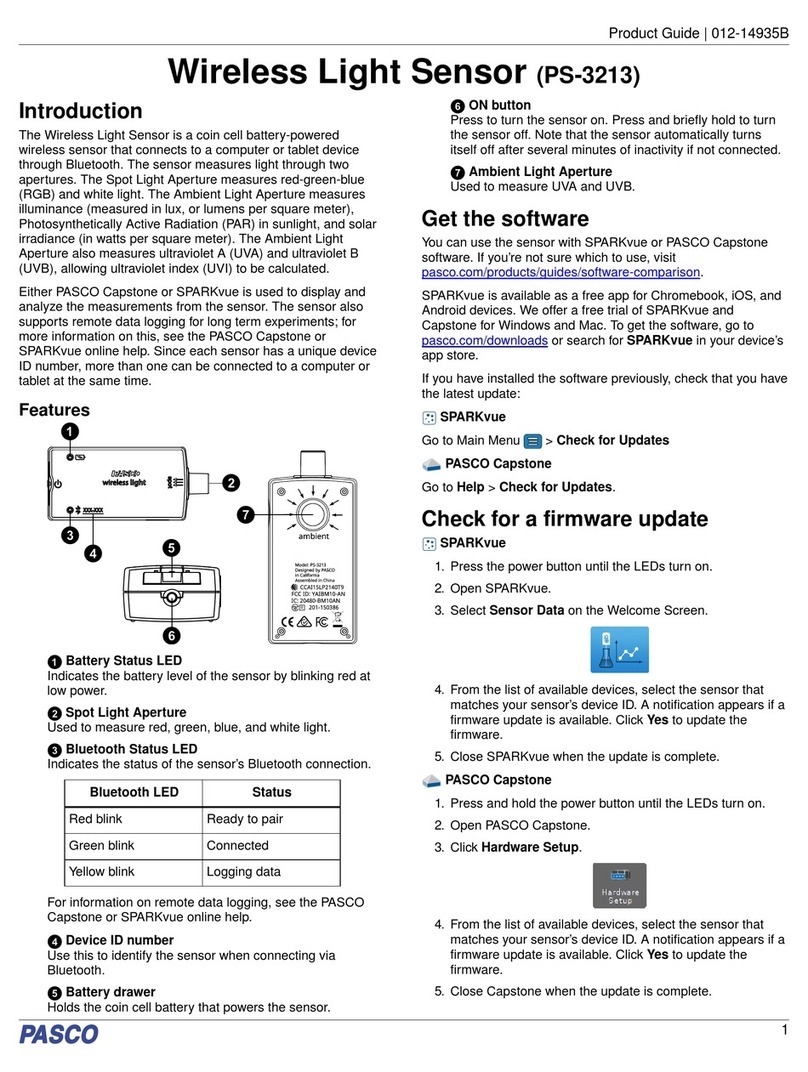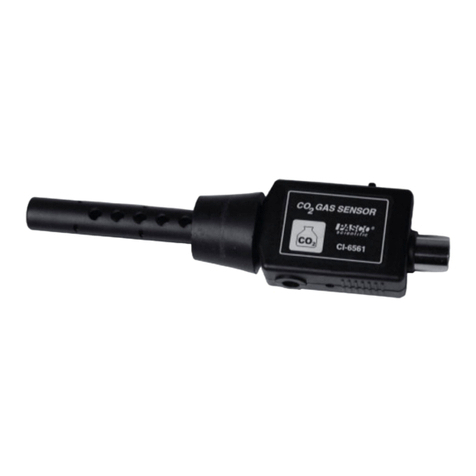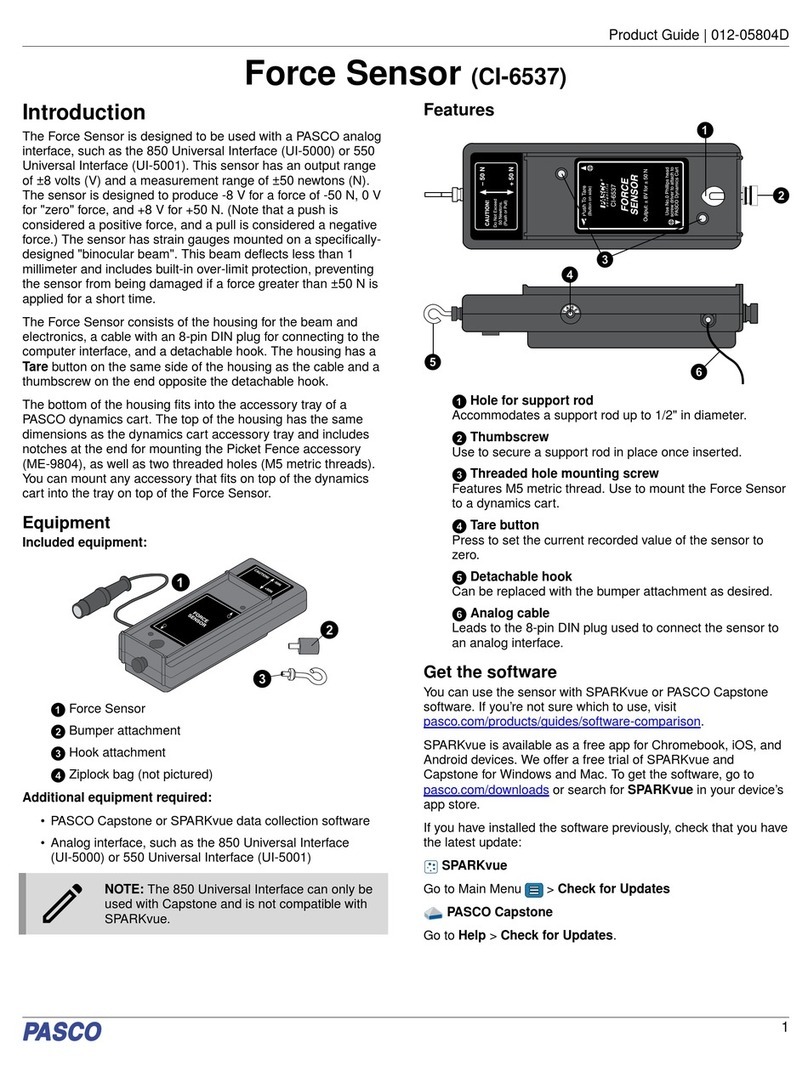
Model No.PS-2195 Introduction
2
Introduction
Salinity is an ecological factor of considerable importance, influencing the types of
organisms that live in a body of water. Salinity also influences the kinds of plants that
can grow in a body of water, or on land fed by the body of water. A quantity of water
is considered saline if it contains moderate or relatively high amounts of dissolved
salts. The term is most often employed to describe water that would, if evaporated
fully, leave behind salts incorporating sodium, calcium, or magnesium. Salinity is the
degree to which a water is saline.
The PASPORT Salinity Sensor works with the 10X Salinity Sensor Probe to measure
salinity, conductivity, and temperature. The sensor determines salinity based on elec-
trical conductivity. The sensor has a built in calculation to compensate for the change
in conductivity due to temperature change based on the Practical Salinity Scale (PSS).
Essentially the conductivity increases as the temperature increases because ions in
solution are more mobile. It is possible to approximate a calculation of total dissolved
solids (TDS) using data from the sensor.
The Salinity Sensor can be connected to any PASPORT interface (such as the Xplorer
GLX or PowerLink). The sensor can be used with the PASPORT Extension Cable.
This cable is 2 meters in length, extending the distance a sensor can reach from a
computer or portable datalogger.
Salinity is often expressed as parts per thousand (ppt) which is approximately equal to
grams of salt per liter of solution. However, salinity is the sum weight of many differ-
ent elements within a given volume of water; not just sodium from sodium chloride.
In the 1970’s, salinity was redefined as the conductivity ratio of a water sample to a
standard potassium chloride (KCl) solution.
Usage
One use for the sensor is to explore the salinity of local water sources. Another use for
the sensor is to explore the interrelationship of salinity, temperature, and
conductivity. The sensor can be used to measure the change in the salinity of saltwater
as the water evaporates.
About the Sensor
The PS-2195 Salinity Sensor’s conductivity range is from 1,000 microsiemens (S)
to 100,000 S. The temperature range is from 0 celsius (C) to 50 °C. The salinity
range is from 1 part per thousand (ppt) to 55 ppt ±10% without calibration.
The temperature compensation is ±0.5 ppt from 0 C to 45 C at 33 ppt.
If the temperature of the solution is out of range, the sensor reports the salinity as
0 ppt. If the conductivity of the solution is below 1,000 S, the sensor reports the
conductivity as 0 S.
The Salinity Sensor measures the electric current through a solution between the two
platinized platinum electrodes in the Salinity Sensor Probe. The current through the
solution is due to the movement of ions, so the higher the concentration of ions in the
solution, the higher its conductivity. A voltage (AC) is applied across the two elec-
trodes in the tip of the probe and the measured current is proportional to the conduc-
tivity of the solution.
PS-2500 PASPORT
Extension Cable
Water Salinity
<0.5 ppt - fresh water
0.5 to 30 ppt - brackish water
30 to 50 ppt - saline water
>50 ppt - brine
Ocean Water
Ocean water is about 3.5%
salt, or 35 ppt, and the salt is
90% sodium chloride.
The sensor actually mea-
sures conductance, the
inverse of resistance,
expressed in siemens. Con-
ductivity depends on the
conductance and the cell
constant of the probe. The
cell constant depends on
the geometry of the elec-
trodes in the probe.
Platinized platinum
electrodes

